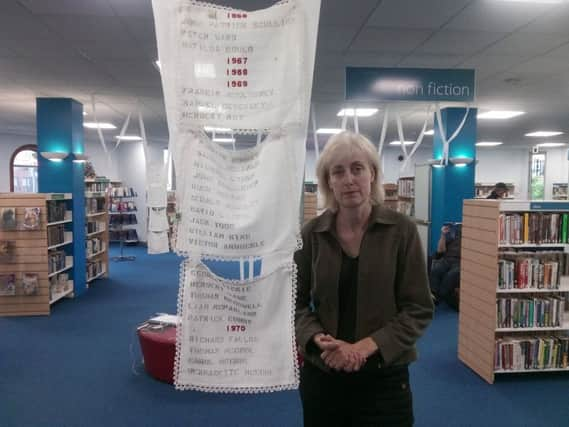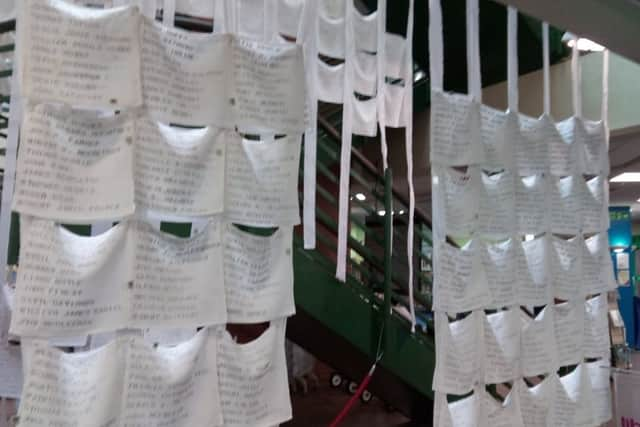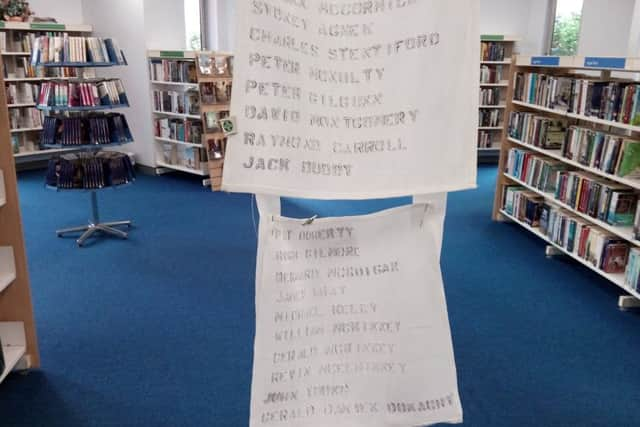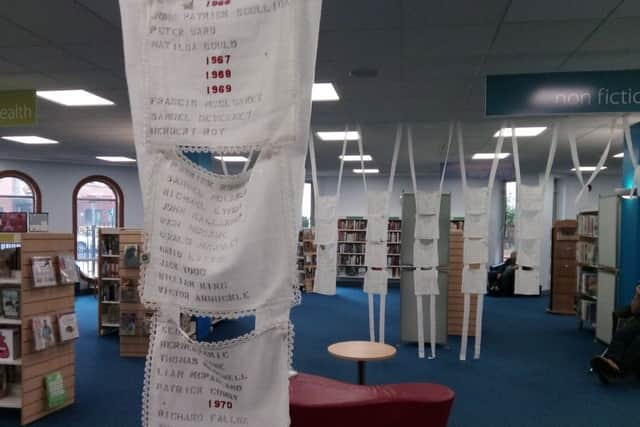Stitching together the north's Troubled past


And the artist behind the hand-stitched project, which took a team of 51 volunteers from across the world five years to complete, said she hopes a more permanent home to display the work can now be found.
The ‘Linen Memorial’ was developed by artist Lycia Trouton, who was born in Belfast.
Advertisement
Hide AdAdvertisement
Hide AdThe artist’s family emigrated to Canada when she was just three year’s old but she believes her roots in Northern Ireland, along with the experiences of emigration and training in, among other places, the “divided city” of Detroit, all fed into the acclaimed work.


Lycia returned to Belfast in 1999 to participate in a site-specific show and was taken around the Linen Museum. She said she was struck by the processes involved.
In developing ‘Linen Memorial’, she followed the book ‘Lost Lives’ - the seminal anthology of all the people killed during the Troubles - and contacted Brian Feeney, co-author.
“I got a grant in 2001. Even then I felt it was almost an anti-violence project because peace was still in process, whether or not you call it post-conflict,” Lycia said. “Then I was lucky enough to get to do more research on it in Australia, under the guise of a practice-led doctorate. Then I started to look at artists from mid-1990s and the art world had really changed. There were a lot of minorities and women doing things with fabric to do with trauma to the body, migration.
Advertisement
Hide AdAdvertisement
Hide Ad“You dredge things up from your own identity. Through your art training, you are encouraged to look in your own backyard, and what has made you this way, and what you should give back to society.”


The linen panels are suspended and linked, arranged from 2006 back to 1966. Each name woven into the handkerchiefs took an hour to do by hand.
There are approximately 400 linen handkerchiefs in the piece, providing a link to once booming linen industry here, and, somewhat less consciously to the famous image of Bishop Daly waving the white hankie on Bloody Sunday, “and also that waving goodbye for the emigrant”.
The exhibition has already been taken to four different continents and has had various stagings in Northern Ireland. A randomised names video installation accompanies the exhibition.
Advertisement
Hide AdAdvertisement
Hide Ad“The years are embroidered in red. I like the idea that, especially at this stage, it’s 2017, re-patterning people’s memories, or in my case an alternative history of the Troubles.


“It’s not like the book, it doesn’t have the biographies or the moment of death, the synopsis, it’s just the names.
“I would like to find a home for it. While I think it is important that it tours different communities, different Catholic and Protestant churches, I like to think it can be secular.
“You enter at 2006 yet you can see 1966 in your vision, so while you might be re-patterning your own memory you could be getting a sense of closure because you go on a journey. There is a lot in Earth Art about the walk, and time and space and memory, especially when it has been an instant, life-changing experience and then your whole life is changed beyond repair.
“It’s not a typical commemoration.”


Advertisement
Hide AdAdvertisement
Hide AdLocal community activist Frankie McMenamin described the installation as “very thought-provoking”.
“As someone who uses the library a lot, I thought it was extremely impressive,” he said.
“This city and region at one time was one of the most significant places that made linen and what was made here went right round the world.”
The exhibition will remain at the Central Library, Foyle Street, Derry, until the end of August.
For more information on the art work go to the website www.linenmemorial.org.